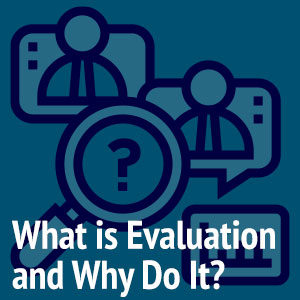
America’s nonprofit community has been powerfully affected by the COVID-19 pandemic. As we noted in or previous article, “The Pandemic and Nonprofits” “… a national survey of 750 members of primarily US based nonprofits, reported that nearly 75% of survey respondents stated their organizations had experienced a drop in revenues, and over 80% had moved all or some of their programs and services to an online format. (See “The Continuing Impact of COVID-19 on the Social Sector”) Eighty percent of surveyed nonprofits are shifting to work from home, many are expecting or already have made reductions in staff, and many are considering mergers with other non-profits. Independent Sector reports that 71% of surveyed large and medium sized nonprofits have reduced services.”
More recently, a 2021 Center for Effective Philanthropy report found that “Most nonprofit leaders reported that the COVID-19 pandemic has had negative impacts on their organizations and has affected their programming, revenue, demand, and costs. Arts and culture organizations have experienced more negative effects from the pandemic, while community and economic development organizations experienced fewer negative effects. (See “Persevering Through Crisis: The State of Nonprofits.”)
The Hill reports that “The financial strain caused by the coronavirus pandemic has put more than 1 in 3 U.S. nonprofits in danger of closing within the next two years, according to a philanthropy study released Wednesday. The report, developed by research group Candid and the Center for Disaster Philanthropy, said that in a worst-case scenario, prolonged crises could lead to upwards of 38 percent of 300,000 nonprofits — more than 119,000 — closing their doors.” (See “1 In 3 Nonprofits in Danger Of Closing Due To Pandemic” By Celine Castronuovo, The Hill. 03/03/21)
As Yogi Berra once said “It’s tough to make predictions, especially about the future.” That said, some observers have forecast a range of characteristics and conditions that are likely to pertain during the COVID recovery. Alex Carchidi wring in the Motley Fool suggests that, “After the pandemic, nonprofits will probably be less active than before, on average. Given that economic recovery from the pandemic may take several years, purse strings are likely to remain tight among the public as well as among prospective corporate donors and government grant officers…spending will contract in the short term and likely in the medium term as well. This means that nonprofits will have less money to spend on services, and it may also mean that nonprofits will need to cut services or lay off staff to remain solvent.”
Leslie Wells notes that “Studies from Johns Hopkins University showed the nonprofit sector lost about 13% of its workforce from March 2020 to February 2021. “It will take years for that workforce to recover that number of lost workers.”
Prior to the pandemic, funding of non-profits has largely focused on discrete projects or specific issues (e.g., “restricted grants”). Following the pandemic, some analysts are calling for Foundations’ funding models to change, so that grantee organizations themselves are sustained (vs. specific programs). “Traditional funding practices have eroded the resiliency of charities and their ability to build sufficient capabilities that can be drawn upon during tough times…the pandemic has highlighted the importance of capabilities and capacity — human resources, information technology, and even extra staff and resources— all expenses that have traditionally been generally discouraged by funding organizations. Yet to build capacity for resilience, non-profits must be permitted and encouraged to build this capacity.” (See “How COVID-19 Could Transform Non-Profit Organizations,” Brent McKnight and Julie Gouweloos, The Conversation, January 31, 2021)
While the pandemic may be abating, the impact on nonprofits is likely to continue for the foreseeable future. Issues of funding/financial stability, capacity-building/organizational infrastructure, and strengthened human resources (e.g. improved compensation, improved working conditions, etc.) will dominate the thinking of nonprofit leaders and staff for the years to come. Although the pandemic has raised awareness of the need to enhance and reinforce the nonprofit sector, it will remain to be seen if funders and nonprofit organizations are able to construct a new framework for supporting a society with ever expanding needs for nonprofit services.
Resources:
“What Will the World for Nonprofits Look Like After COVID-19?”
“Persevering Through Crisis: The State of Nonprofits,” Hannah Martin, Kate Gehling, and Ellie Buteau, The Center For Effective Philanthropy
“For Nonprofits, Moving Forward Requires Looking Back”, Leslie Wells,
Making a Difference: News and notes from the O’Neill School at IUPUI. July 19, 2021
“Considerations for Nonprofits in the Post-COVID-19 Environment,” Nonprofit Practice Leaders | April 08, 2021
“How COVID-19 Could Transform Non-Profit Organizations,” Brent McKnight and Julie Gouweloos, The Conversation, January 31, 2021
“1 In 3 Nonprofits in Danger Of Closing Due To Pandemic,” Celine Castronuovo, The Hill, March 3, 2021
“Impact of the Pandemic & Economic Shutdown on the Nonprofit Sector,” Charity Navigator,
“COVID-19’s Impact on Nonprofits’ Revenues, Digitization, and Mergers,” David La Piana, Stanford Social Innovation Review, June 4, 2020





